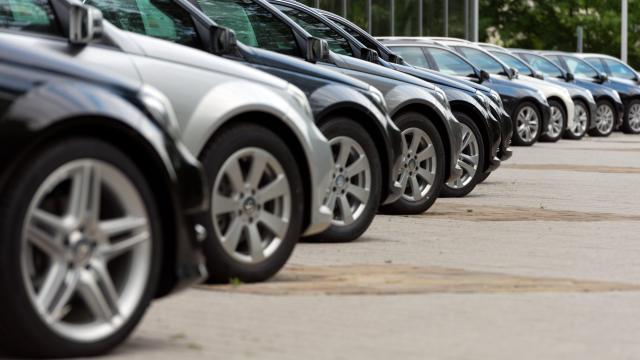You may have noticed that the dollars in your wallet seem to suddenly be worth something less than a dollar. For that, you can thank inflation, a measurement of decreasing purchasing power. The current U.S. inflation rate is 6.8%, which is the highest it’s been in forty years. What that means in practical terms is that the stuff you buy is, on average, 6.8% more expensive than it was a year or so ago. And when it comes to buying a car, the picture is even more bleak.
Supply-chain issues coupled with inflation have made cars incredibly expensive incredibly fast, and everyone is struggling to play catch-up. The average used car price is now an astounding $US29,000 ($40,499) — a 39% increase over the past year. That means that for the first time in history, more than half the country lacks the income necessary to buy your average used car. And new cars are also more expensive than ever, averaging $US45,872 ($64,060) — up from $US39,984 ($55,838) just a year ago.
However, despite the extra sticker shock, you might have no choice but to purchase a vehicle in this inflation-ridden hellscape. If that’s the case, here are the steps you can take to minimise the horror.
If at all possible, just wait
Step one is to take a breath and ask yourself: Do you absolutely need to buy a car right now? Inflation will likely moderate at some point, and the supply-chain problems that are making new cars so expensive (which, in turn, increases demand for used cars) will probably eventually get sorted out. In other words, prices will go down at some point, at least a little. If you can wait it out for a few months or a year, it might be well worth your while.
Get pre-approved
If you’re going to be using a loan to buy your car, plan ahead and get pre-approved for one. This will help you in a lot of ways: You can shop around for the best interest rate and other terms, instead of being pressured by a salesman to sign a contract on the spot. You’ll also be walking into the dealership with “cash in hand” — not literal cash, but the ability to purchase the car right then and there, which gives you increased negotiating power. And knowing ahead of time what your loan terms are means the dealership can’t fool you by focusing on monthly payments instead of interest rates or total cost of ownership, so you’ll get the best possible deal.
That doesn’t mean you shouldn’t listen to the dealer’s financing offer — it might be better than your bank’s. But having a pre-approval puts the ball in your court.
Do your research
This piece of advice is evergreen and useful even when the economy is booming and you just found a suitcase full of cash buried in your backyard, as one does: Don’t just show up at a dealership. Do your research — know the car you want to buy, which dealerships have them in stock, and what they’re charging. You can use sites like Rydeshopper or Edmunds to get a lot of basic information that will help you negotiate the best deal.
It’s also worth noting that in a hot market like this, you should be prepared to be flexible — and have backup options in mind. If your first choice is gone by the time you get to the dealership, or if you have to pivot because the price suddenly goes up, having a short list of acceptable substitutes you’ve also already done the research on will keep you on mission so you don’t make a panic buy.
Maximise your trade-in
Cars are expensive — but that can work in your favour. If you’re trading in your old car you, have the one thing the car dealer is desperate for — more inventory. Trade-in values jumped 50% over the last year, and even cars with a lot of miles on them are getting enormous bids. Shop your trade-in to various dealers and check its value on sites like Carvana to get an idea of what your trade-in is worth, then work that asset as hard as you can. Scoring a big premium on your trade-in can make that new car much more affordable.
Be decisive
Cars are hot commodities, so you’re going to have to be decisive — if you find a vehicle you want, negotiate a good price, and have a great deal on your trade-in in hand, pull the trigger. The average car is only on the lot for 17 days right now, compared with 70 a few years ago. The old days of walking away as a negotiating tactic are over for the time being — by the time you come back, your car will most likely have been sold.
It’s a bad time to buy a car — but you can make it a little less nightmarish with some preparation and a realistic attitude — though finding that suitcase of cash wouldn’t hurt.

Leave a Reply
You must be logged in to post a comment.